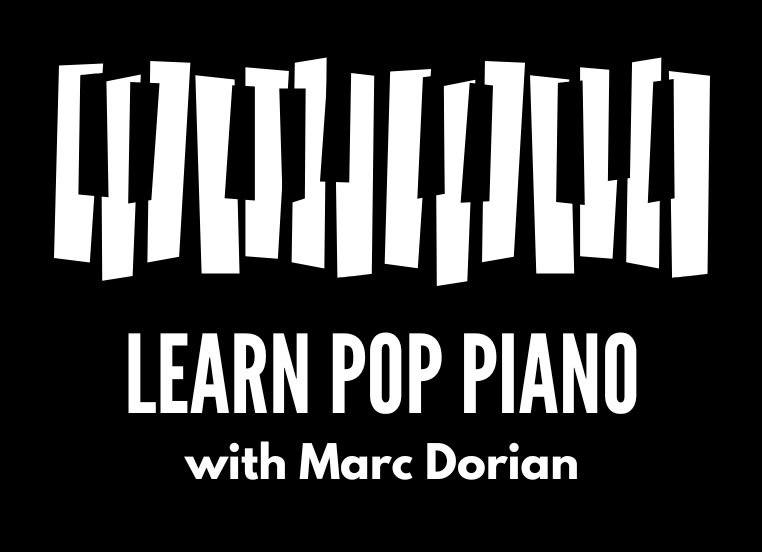Blog > What is From Bach To Rock: How I Found My Way (And How You Can Too)?
From Bach To Rock: How I Found My Way (and How You Can Too)

It was 1991, and I was in my first year of university on the east coast of Canada. Up to that point, every
bit of my piano training was classical — Bach, Beethoven, Mozart, Chopin, and plenty of scales. I could
play my way through a sonata or read from a page of sheet music with confidence. But deep down, I
had a nagging feeling that something was missing.
One night, sitting in the lounge of the music building with my friend Cherie...a singer who was always
up for late-night music talk...I remember saying, “I just want to be in a band. I see guys who can just
sit down and play Billy Joel songs, or jump into anything by ear. I don’t know how to do that.”
And that was the truth. I could read the music, but I didn’t feel it yet — not in the way those players did.
They could sit at the piano and make it come alive without a single sheet of music. To me, that seemed
like magic.
Cherie gave me one of those quiet, simple truths that stick with you forever: “I’m sure the people who
can do that have put the time in to really listen and figure out what’s going on in the music — and they
get good at playing in that style.” At the time, I didn’t fully understand what she meant. But she was
right.
Over the next few years, I dove into the music that had always inspired me but that I’d never really
studied — Billy Joel, Elton John, The Beatles, Bruce Hornsby, Bryan Adams, and all the great
piano-based rock and pop artists. I listened endlessly, not just to the songs, but to the details: the chord
movements, the fills, the groove of the rhythm section, and the way the piano interacted with the rest of
the band.
I was especially drawn to Billy Joel’s live performances — the energy, the crowd interaction, and the
way the piano drove the whole thing forward. His ballad “Honesty” completely floored me. The lyrics
were powerful, but it was the chord changes that got me. They moved in such a clever, emotional way
— something you’d never fully appreciate just reading notes off a page.
That’s when I realized something huge: classical training had given me technique, discipline, and
theory. But what I was missing was style — the real-world vocabulary that pop and rock players use
every day.
Most of my education from that point forward came through experience — being thrown into the fire. I
took every opportunity I could get. Every gig was a new challenge, and every band or piano bar brought
new lessons.

By the late ’90s, that hands-on learning turned into a full-time career. By 1999, I was performing four or
five nights a week across the U.S., playing high-energy piano bar shows and dueling pianos. I was entertaining crowds, singing, and taking requests night after night — from Billy Joel and Elton John to Bon Jovi and Bryan Adams.
And somewhere along the way, I went from “I don’t know how to play that” to “Sure, let’s do it, sing along with me!” Those years shaped everything I know about real-world playing. They taught me that theory and reading notation are valuable tools, but they’re just one part of being a complete musician. The ability to listen, react, groove, and make a song your own — that’s where the magic happens.
Because I started where so many of my students are — classically trained, but unsure how to “cross
over” — I know exactly how frustrating it can feel. Perhaps you can play technically demanding music but freeze
when someone asks, “Can you just jam on this chord progression?” or “Can you play something by
ear?”
That’s why my teaching now focuses on practical, engaging, and encouraging methods. I love helping
adult students unlock those missing pieces — chords, progressions, grooves, fills, and improvisation —
the things that make pop, rock, country, and blues piano come alive.
I know how to break down what once felt like a mystery into simple, usable steps. Because I lived that
struggle. I know how it feels to look at a piano and think, “I can play Beethoven, but I can’t play with a
band.” And I know the incredible feeling of breaking through that wall.

Fast forward to today, and I’ve been making my living playing music for over 25 years. I’ve performed
as a solo entertainer, a dueling piano player, a sideman in bands, and now as the touring
keyboardist for a national recording artist. I’ve been lucky to share stages with artists I grew up
admiring — people like Sheryl Crow, Foreigner, and Darius Rucker — and I’ve played in more than 40
U.S. states, plus places like The Bahamas, Norway, and Denmark.
But it all started with the realization that learning to play music isn’t just about reading it. So if you’ve ever wondered how to go from classical to contemporary…from “following notes” to feeling them…I get it. I’ve been there. And that’s exactly why I built Learn Pop Piano — to help you bridge that same gap, one note at a time.
Blog > What is From Bach To Rock: How I Found My Way (And How You Can Too)?
From Bach To Rock: How I Found My Way (and How You Can Too)

It was 1991, and I was in my first year of university on the east coast of Canada. Up to that point, every
bit of my piano training was classical — Bach, Beethoven, Mozart, Chopin, and plenty of scales. I could
play my way through a sonata or read from a page of sheet music with confidence. But deep down, I
had a nagging feeling that something was missing.
One night, sitting in the lounge of the music building with my friend Cherie...a singer who was always
up for late-night music talk...I remember saying, “I just want to be in a band. I see guys who can just
sit down and play Billy Joel songs, or jump into anything by ear. I don’t know how to do that.”
And that was the truth. I could read the music, but I didn’t feel it yet — not in the way those players did.
They could sit at the piano and make it come alive without a single sheet of music. To me, that seemed
like magic.
Cherie gave me one of those quiet, simple truths that stick with you forever: “I’m sure the people who
can do that have put the time in to really listen and figure out what’s going on in the music — and they
get good at playing in that style.” At the time, I didn’t fully understand what she meant. But she was
right.
Over the next few years, I dove into the music that had always inspired me but that I’d never really
studied — Billy Joel, Elton John, The Beatles, Bruce Hornsby, Bryan Adams, and all the great
piano-based rock and pop artists. I listened endlessly, not just to the songs, but to the details: the chord
movements, the fills, the groove of the rhythm section, and the way the piano interacted with the rest of
the band.
I was especially drawn to Billy Joel’s live performances — the energy, the crowd interaction, and the
way the piano drove the whole thing forward. His ballad “Honesty” completely floored me. The lyrics
were powerful, but it was the chord changes that got me. They moved in such a clever, emotional way
— something you’d never fully appreciate just reading notes off a page.
That’s when I realized something huge: classical training had given me technique, discipline, and
theory. But what I was missing was style — the real-world vocabulary that pop and rock players use
every day.
Most of my education from that point forward came through experience — being thrown into the fire. I
took every opportunity I could get. Every gig was a new challenge, and every band or piano bar brought
new lessons.

By the late ’90s, that hands-on learning turned into a full-time career. By 1999, I was performing four or
five nights a week across the U.S., playing high-energy piano bar shows and dueling pianos. I was entertaining crowds, singing, and taking requests night after night — from Billy Joel and Elton John to Bon Jovi and Bryan Adams.
And somewhere along the way, I went from “I don’t know how to play that” to “Sure, let’s do it, sing along with me!” Those years shaped everything I know about real-world playing. They taught me that theory and reading notation are valuable tools, but they’re just one part of being a complete musician. The ability to listen, react, groove, and make a song your own — that’s where the magic happens.
Because I started where so many of my students are — classically trained, but unsure how to “cross
over” — I know exactly how frustrating it can feel. Perhaps you can play technically demanding music but freeze
when someone asks, “Can you just jam on this chord progression?” or “Can you play something by
ear?”
That’s why my teaching now focuses on practical, engaging, and encouraging methods. I love helping
adult students unlock those missing pieces — chords, progressions, grooves, fills, and improvisation —
the things that make pop, rock, country, and blues piano come alive.
I know how to break down what once felt like a mystery into simple, usable steps. Because I lived that
struggle. I know how it feels to look at a piano and think, “I can play Beethoven, but I can’t play with a
band.” And I know the incredible feeling of breaking through that wall.

Fast forward to today, and I’ve been making my living playing music for over 25 years. I’ve performed
as a solo entertainer, a dueling piano player, a sideman in bands, and now as the touring
keyboardist for a national recording artist. I’ve been lucky to share stages with artists I grew up
admiring — people like Sheryl Crow, Foreigner, and Darius Rucker — and I’ve played in more than 40
U.S. states, plus places like The Bahamas, Norway, and Denmark.
But it all started with the realization that learning to play music isn’t just about reading it. So if you’ve ever wondered how to go from classical to contemporary…from “following notes” to feeling them…I get it. I’ve been there. And that’s exactly why I built Learn Pop Piano — to help you bridge that same gap, one note at a time.






